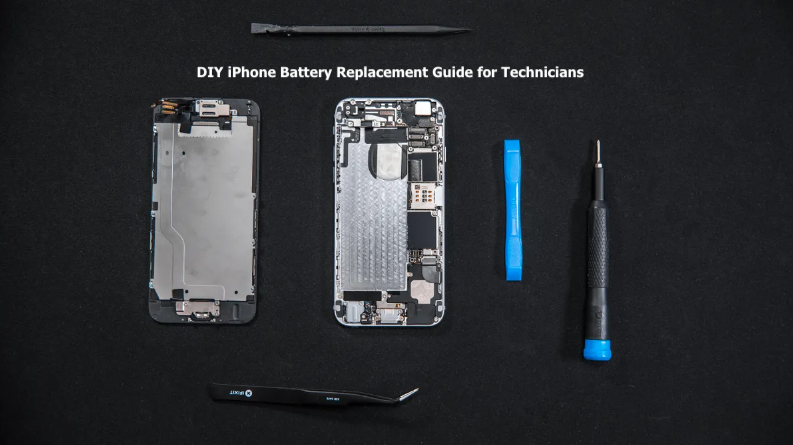This is my personal DIY iPhone Battery Replacement which was very easy to accomplish. Here’s how I replaced my old iPhone battery with a new one at home, and you can do it too. Follow this guide to know what I did.
Although Apple offers a do-it-yourself repair program, you can still replace your iPhone’s battery or screen on your own using third-party components and tools that are readily available for purchase. Doing so can often be cheaper than having a company perform the repairs.
I personally replaced the battery of a used iPhone 6 that I bought on eBay for £75 (about $100 or AU$140), as the battery had deteriorated to the point where the phone’s performance was being artificially throttled.
Instead of giving up on the phone, I bought a replacement battery and tools from iFixit and successfully installed the new battery myself. While I won’t provide step-by-step instructions here, I will share my experience and answer some common questions you may have about replacing your iPhone battery.
It’s important to note that if you have a newer model (iPhone 12 or newer), you should first explore Apple’s repair options and consider using official parts directly from the company. Sincerely, keep in mind that any maintenance you do on your devices is done at your own risk.
1. What you need to replace an iPhone battery
As time passes, batteries naturally degrade, which explains why the iPhone 6, released more than seven years ago, wasn’t functioning optimally when I purchased it. On one occasion, the phone unexpectedly shut down while in use, and displayed a warning message stating that the battery couldn’t provide the necessary power, leading to the shutdown. The phone even acknowledged that its battery was faulty.
In summary, a phone’s performance can be limited if the battery can’t keep up with power demands. While there is an option to disable this limitation, doing so can result in more frequent crashes. Neither scenario is desirable, so I decided to replace the battery, as this seemed like a sensible course of action for me since it wasn’t my primary phone, and I was prepared to take the risks.
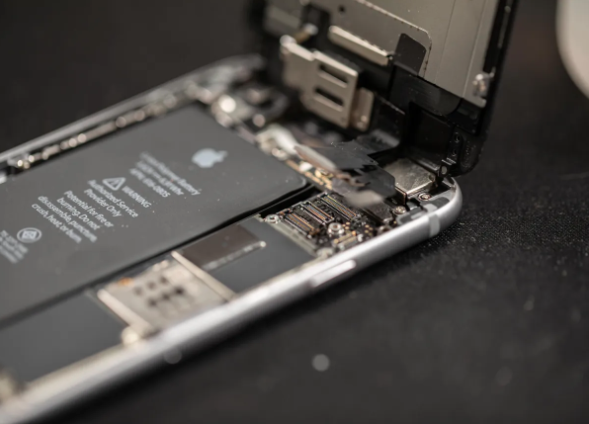
2. How much is the cost of replacement iPhone battery?
The issue I faced was that since I had originally purchased the phone at such a low price, the cost of getting a battery replacement service would have offset some of my initial savings. Apple’s official replacement service comes with a price tag of £49 ($49), which is more than half of what I paid for the iPhone 6. Additionally, I was unable to visit an Apple store as I was in the middle of a coronavirus lockdown, and sending it through the mail would have resulted in a total cost of around £56 (approximately $75 or AU$105).
However, iFixit offered a DIY replacement kit for £35 (including delivery to my home in Scotland), which is priced at $30 in the US, and with shipping, it amounts to approximately $38. While it isn’t a significant discount compared to Apple’s official replacement, every little bit helps.
3. What is included in the iFixit battery replacement kit?
The iFixit kit contains a third-party replacement battery that is not made by Apple, as Apple does not sell its parts separately for phones older than the iPhone 12. Additionally, the kit includes all the necessary tools to open the phone and remove the old battery. The only other item required is a hair dryer to heat up and remove the glue.
4. Will replacing the battery void your phone’s warranty?
The act of opening an iPhone will void its warranty. But if your battery is old enough to require replacement, you’re likely already outside of the 1 year warranty period.
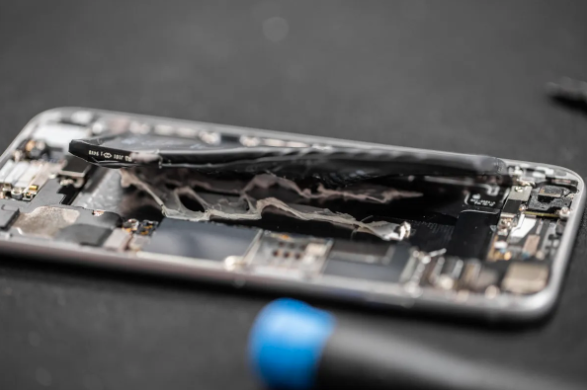
5. Is it safe to replace an iPhone battery on your own?
This question is a bit more complicated to answer. While iFixit provides detailed instructions on each step of the process, there were a few aspects that made me apprehensive. One step required using a hair dryer to heat up the back of the phone to loosen the glue holding the old battery in place. The instructions advised to heat it until it was “slightly too warm to touch comfortably,” which I found a little vague. Additionally, the guide warns that “overheating the iPhone may ignite the battery,” but it doesn’t provide clear guidelines on how hot is too hot, or what signs would indicate that the phone was overheating.
While attempting to remove the old battery, I accidentally ripped the black wrapping around it, which was concerning. Though I didn’t believe the battery was punctured, I would have felt more secure if there had been “emergency” instructions available in case the battery did ignite.
6. Can I replace my iPhone battery on my own?
I found that I was able to replace the battery myself up to a certain point, even though I’m not typically skilled in DIY tasks. iFixit’s instructions were straightforward, and there were only seven internal screws to remove, which was manageable.
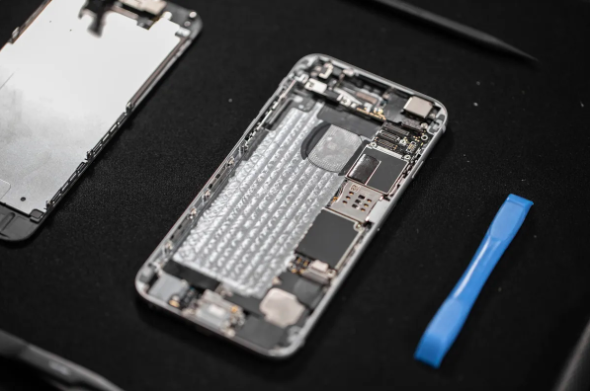
However, I found it confusing that the instructions ended after removing the old battery. The conclusion section only advised to reverse the previous steps, which was not difficult, but I would have appreciated more guidance.
Another problem I encountered was that while removing the screen, I cracked the screen protector that was in place. I noticed hairline cracks and was concerned that I had damaged the display itself, but luckily, it was unscathed.
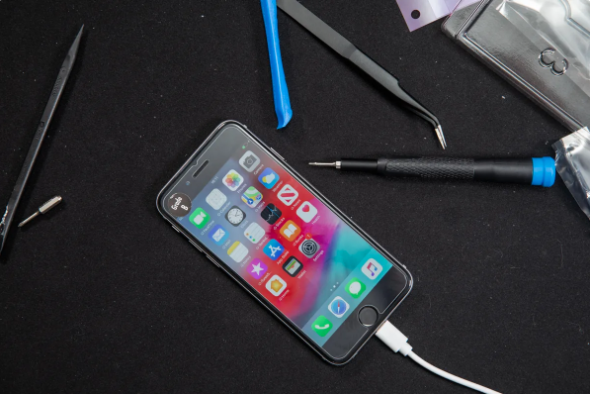
7. Is it worth it to replace an iPhone battery?
The answer to this question depends on the age and value of your phone. If you purchased a used iPhone for a low price and want to restore it to peak performance, replacing the battery could be a fantastic method of rejuvenating older technology without breaking the bank. Keep in mind, though, that this wasn’t my primary phone, and I didn’t pay for it myself. The danger was low for me, and if I had damaged the phone, it wouldn’t have been a big deal. You must consider if you can live without your phone and your risk tolerance.
If you’re using a newer device, such as an iPhone 13, for instance, it’s best to take it directly to Apple. The cost savings you’ll get from doing it yourself aren’t significant enough to justify the potential expense of damaging a more valuable phone.
Make sure you follow all these instructions carefully during iPhone Battery Replacement process.
See also
- Find My iPhone App Helps to Locate Your Lost or Stolen iPhone
- Turn off Your iPhone Lock Screen Feature to Boost Security
- How to Disable Find My iPhone – Turn it off Completely
What you must know before Changing iPhone Battery by Yourself
Firstly, it’s important to note that attempting any DIY repairs on your own devices carries a certain level of risk. And if not done correctly, it could damage your device or void your warranty. It’s always a good idea to research and understand the risks and steps involved before attempting any repairs.
If you’re considering replacing the battery on an iPhone, it’s important to make sure you have the correct tools and components for the specific model of iPhone. iFixit is a reputable source for tools and components, and they offer step-by-step guides for many iPhone repairs.
It’s also worth noting that some iPhone models have components that are difficult to replace without specialized tools or expertise. For example, the iPhone 12 models have a special Apple-designed tool that is required for battery replacement. So before attempting any repairs, it’s a good idea to research and make sure you have the necessary tools and skills for the job.
Lastly, if your iPhone is still under warranty, it’s best to check with Apple or an authorized repair center to see if the repairs are covered under warranty. Attempting repairs yourself could potentially void the warranty and make future repairs more difficult.
In summary, replacing an iPhone battery yourself can be a cost-effective solution, but it’s important to research and understand the risks and steps involved before attempting any repairs. And if your iPhone is still under warranty, it’s best to check with Apple or an authorized repair center before attempting any DIY repairs.
Read also:
- Do Nothing, But These 6 Things After Unboxing your iPhone
- How to Set up Cash App in Your Mobile Smartphone
- Mac POS Software for iPAD & iPhone System Users

